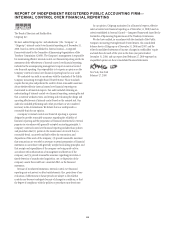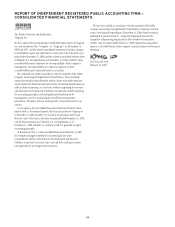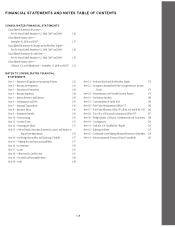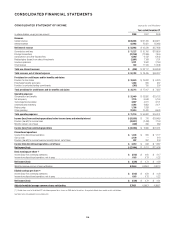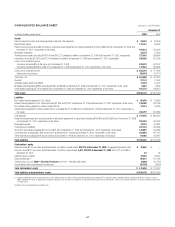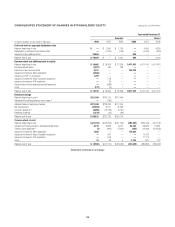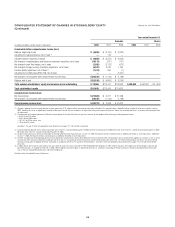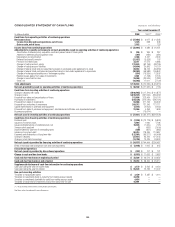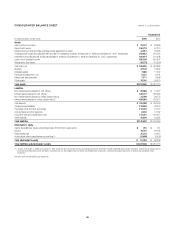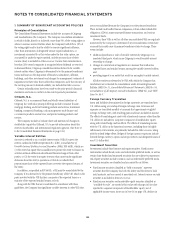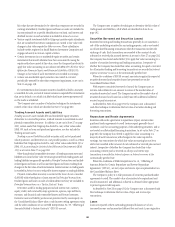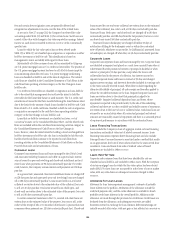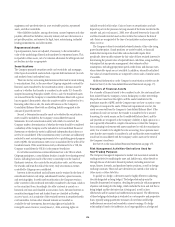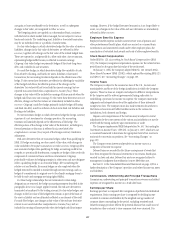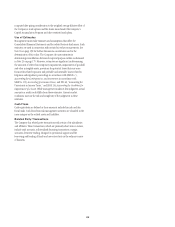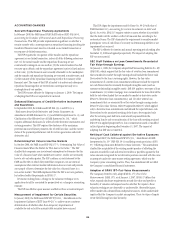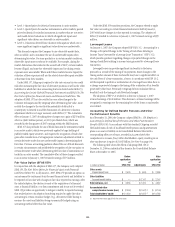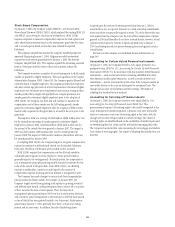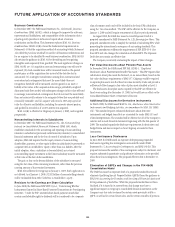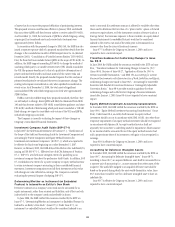Citibank 2008 Annual Report Download - page 129
Download and view the complete annual report
Please find page 129 of the 2008 Citibank annual report below. You can navigate through the pages in the report by either clicking on the pages listed below, or by using the keyword search tool below to find specific information within the annual report.fair value that are determined to be other than temporary are recorded in
earnings immediately. Realized gains and losses on sales are included in
income primarily on a specific identification cost basis, and interest and
dividend income on such securities is included in Interest revenue.
• Venture capital investments held by Citigroup’s private equity subsidiaries
that are considered investment companies are carried at fair value with
changes in fair value reported in Other revenue. These subsidiaries
include entities registered as Small Business Investment Companies and
engage exclusively in venture capital activities.
• Certain investments in non-marketable equity securities and certain
investments that would otherwise have been accounted for using the
equity method are carried at fair value, since the Company has elected to
apply fair value accounting in accordance with SFAS 159, The Fair Value
Option for Financial Assets and Financial Liabilities (SFAS 159).
Changes in fair value of such investments are recorded in earnings.
• Certain non-marketable equity securities are carried at cost and
periodically assessed for other-than-temporary impairment, as set out in
Note 16 on page 158.
For investments in fixed-income securities classified as held-to-maturity
or available-for-sale, accrual of interest income is suspended for investments
that are in default or on which it is likely that future interest payments will
not be made as scheduled.
The Company uses a number of valuation techniques for investments
carried at fair value, which are described in Note 27 on page 202.
Trading Account Assets and Liabilities
Trading account assets include debt and marketable equity securities,
derivatives in a receivable position, residual interests in securitizations and
physical commodities inventory. In addition (as set out in Note 27 on page
202), certain assets that Citigroup has elected to carry at fair value under
SFAS 159, such as loans and purchased guarantees, are also included in
Trading account assets.
Trading account liabilities include securities sold, not yet purchased
(short positions), and derivatives in a net payable position, as well as certain
liabilities that Citigroup has elected to carry at fair value under SFAS 159 or
SFAS 155, Accounting for Certain Hybrid Financial Instruments (SFAS
155) as set out in Note 27 on page 202.
Other than physical commodities inventory, all trading account assets and
liabilities are carried at fair value. Revenues generated from trading assets and
trading liabilities are generally reported in Principal transactions and include
realized gains and losses as well as unrealized gains and losses resulting from
changes in the fair value of such instruments. Interest income on trading assets
is recorded in Interest revenue reduced by interest expense on trading liabilities.
Physical commodities inventory is carried at the lower of cost or market
(LOCOM) with related gains or losses reported in Principal transactions.
Realized gains and losses on sales of commodities inventory are included in
Principal transactions on a “first in, first out” basis.
Derivatives used for trading purposes include interest rate, currency,
equity, credit, and commodity swap agreements, options, caps and floors,
warrants, and financial and commodity futures and forward contracts.
Derivative asset and liability positions are presented net by counterparty on
the Consolidated Balance Sheet when a valid master netting agreement exists
and the other conditions set out in FASB Interpretation No. 39, “Offsetting of
Amounts Related to Certain Contracts” (FIN 39) are met.
The Company uses a number of techniques to determine the fair value of
trading assets and liabilities, all of which are described in Note 26 on
page 192.
Securities Borrowed and Securities Loaned
Securities borrowing and lending transactions generally do not constitute a
sale of the underlying securities for accounting purposes, and so are treated
as collateralized financing transactions when the transaction involves the
exchange of cash. Such transactions are recorded at the amount of cash
advanced or received plus accrued interest. As set out in Note 27 on page 202,
the Company has elected under SFAS 159 to apply fair value accounting to a
number of securities borrowing and lending transactions. Irrespective of
whether the Company has elected fair-value accounting, fees paid or received
for all securities lending and borrowing transactions are recorded in Interest
expense or Interest revenue at the contractually specified rate.
Where the conditions of FIN 39 are met, amounts recognized in respect of
securities borrowed and securities loaned are presented net on the
Consolidated Balance Sheet.
With respect to securities borrowed or loaned, the Company pays or
receives cash collateral in an amount in excess of the market value of
securities borrowed or loaned. The Company monitors the market value of
securities borrowed and loaned on a daily basis with additional collateral
received or paid as necessary.
As described in Note 26 on page 192, the Company uses a discounted
cash-flow technique to determine the fair value of securities lending and
borrowing transactions.
Repurchase and Resale Agreements
Securities sold under agreements to repurchase (repos) and securities
purchased under agreements to resell (reverse repos) generally do not
constitute a sale for accounting purposes of the underlying securities, and so
are treated as collateralized financing transactions. As set out in Note 27 on
page 202, the Company has elected to apply fair-value accounting to a
majority of such transactions, with changes in fair-value reported in
earnings. Any transactions for which fair-value accounting has not been
elected are recorded at the amount of cash advanced or received plus accrued
interest. Irrespective of whether the Company has elected fair-value
accounting, interest paid or received on all repo and reverse repo
transactions is recorded in Interest expense or Interest revenue at the
contractually specified rate.
Where the conditions of FASB Interpretation No. 41, “Offsetting of
Amounts Related to Certain Repurchase and Reverse Repurchase
Agreements” (FIN 41), are met, repos and reverse repos are presented net on
the Consolidated Balance Sheet.
The Company’s policy is to take possession of securities purchased under
agreements to resell. The market value of securities to be repurchased and
resold is monitored, and additional collateral is obtained where appropriate
to protect against credit exposure.
As described in Note 26 on page 192, the Company uses a discounted cash
flow technique to determine the fair value of repo and reverse repo
transactions.
Loans
Loans are reported at their outstanding principal balances net of any
unearned income and unamortized deferred fees and costs. Loan origination
123


